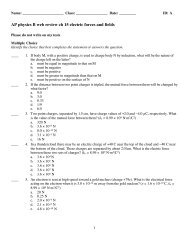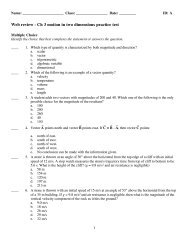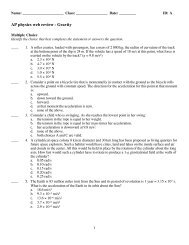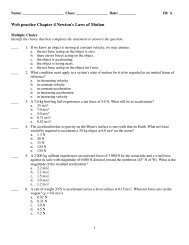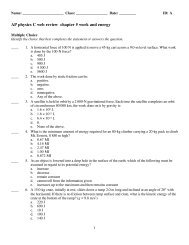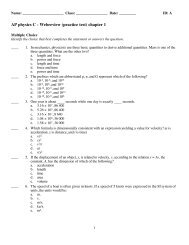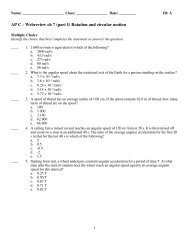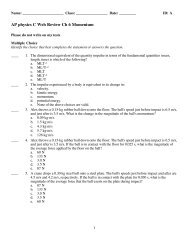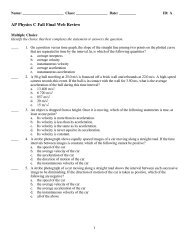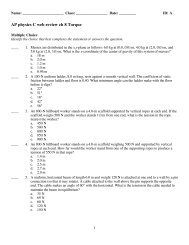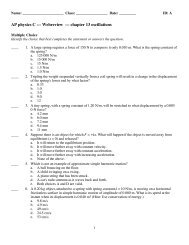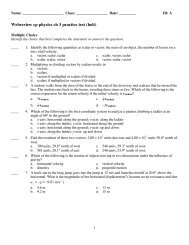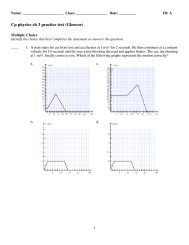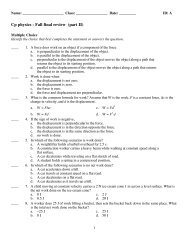AP Physics
AP Physics -â Static Electricity - Planet Holloway
AP Physics -â Static Electricity - Planet Holloway
You also want an ePaper? Increase the reach of your titles
YUMPU automatically turns print PDFs into web optimized ePapers that Google loves.
Leyden Jar: Ewald George von Kleist in 1745 and Pieter van Musschenbroek in 1746<br />
developed this wonderful device. It was the first method discovered to store a significant amount of<br />
charge for later use. The Leyden jar was an accidental discovery. Kleist apparantly thought that<br />
electricity was a liquid. It made sense that it might dissolve in water, so an attempt was made to put<br />
some charge in a beaker of water. He hooked a wire in the beaker to an electrostatic generating<br />
machine. Holding the beaker in his hand, he cranked up the machine to generate charge. It turned<br />
out that electricity did go into the beaker, but it didn’t dissolve into the water. This was discovered<br />
a bit later when an assistant touched the wire in the beaker while holding the outside of the thing<br />
and got a tremendous shock. The shock was so painful and shocking that Kleist gave up on the<br />
whole thing.<br />
The Leyden jar was the first capacitor. The first one wasn’t a real<br />
proper Leyden jar, but it certainly acted like one.<br />
A Leyden jar is simply a jar that has a conductor on the inside lining its<br />
inner surface and a conductor on the outside surface. An electrode<br />
sticks up above the jar through the lid. The electrode is connected to<br />
the inner conductor.<br />
Here is the classic Leyden jar. It has a metal foil lining on the inside<br />
lower half and a similar coating on the outside. The electrode in the<br />
center makes electrical contact with the inside metal layer via a chain.<br />
The key thing though is that you must have two conductors separated<br />
by an insulator. Another common way to make a Leyden jar (the one<br />
we will use) is to have an electrolyte solution on the inside and a foil<br />
lining on the outside. The electrode pokes down into the electrolyte.<br />
Recall that electrolytes are solutions that conduct electricity. We will<br />
use salt water.<br />
Charge and the Leyden Jar: When a charged object is brought near the center electrode,<br />
the inner conductor becomes polarized. In the drawing (which has a greatly exaggerated conductor<br />
277



